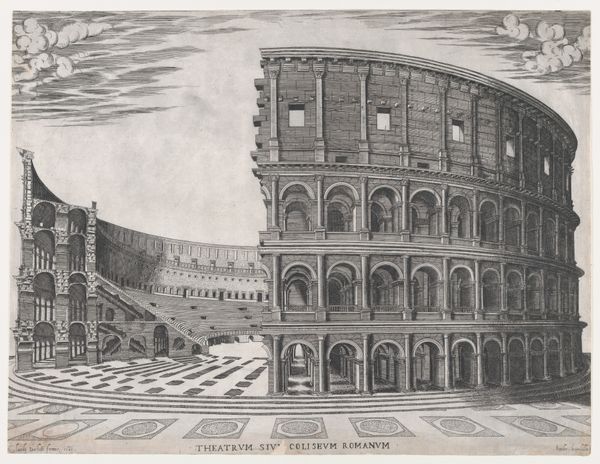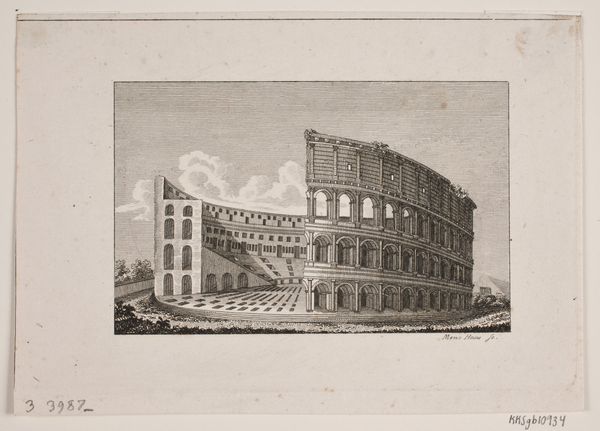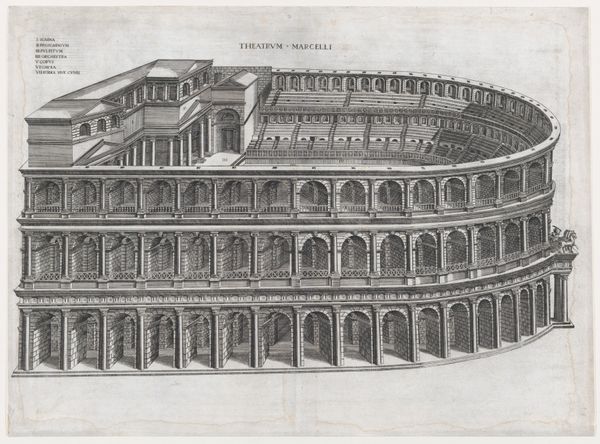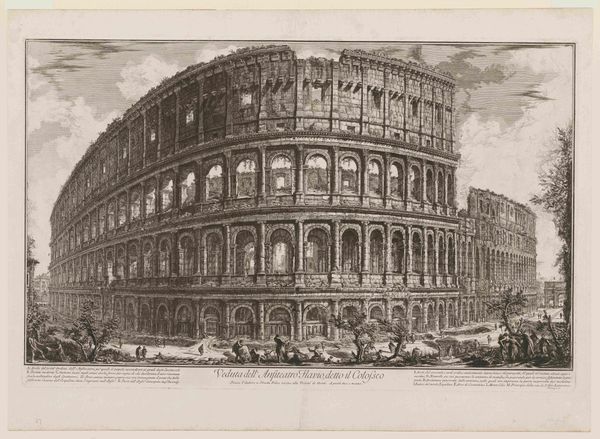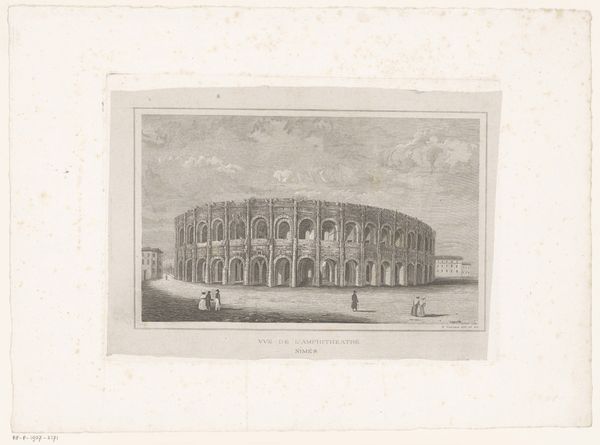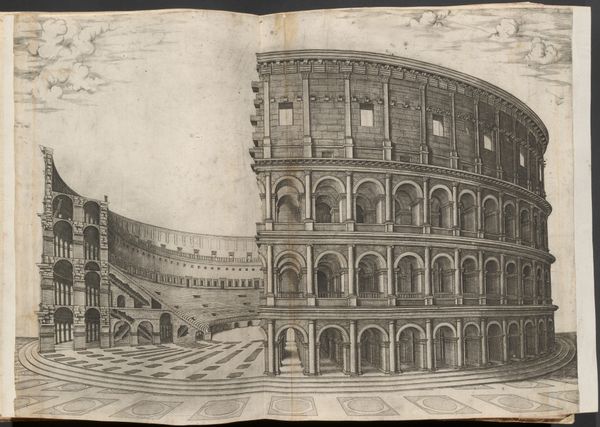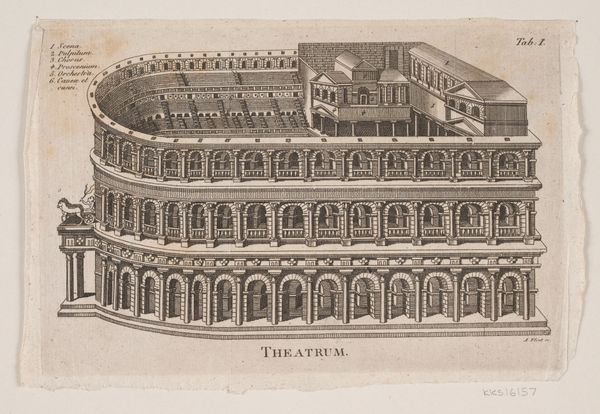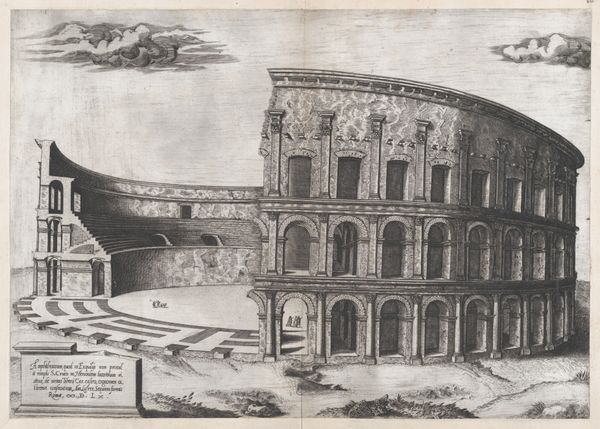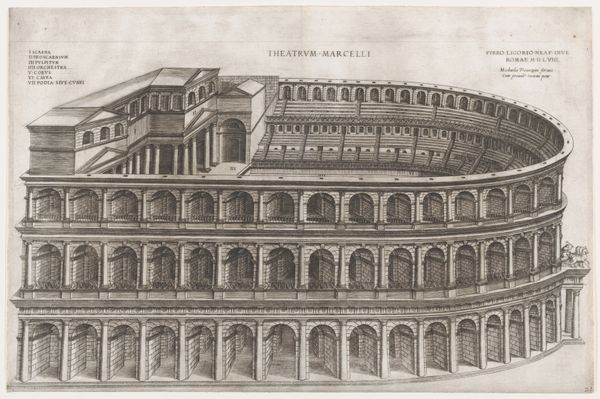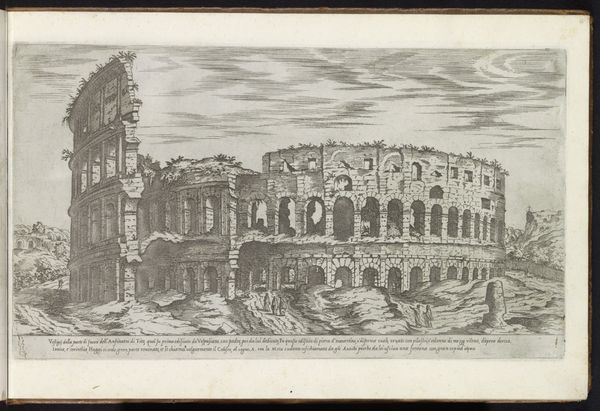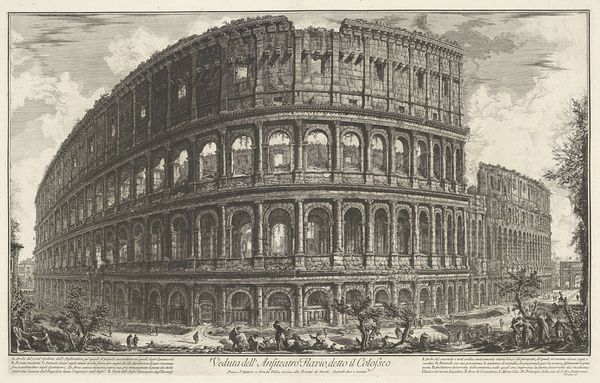
print, engraving, architecture
#
neoclacissism
# print
#
old engraving style
#
cityscape
#
engraving
#
architecture
Dimensions: height 331 mm, width 410 mm
Copyright: Rijks Museum: Open Domain
Curator: So, we're looking at "View of the Arena of Nîmes," an engraving by Jean Baptiste Antoine Guibert, made in 1786. Editor: Yes, the detailed architectural rendering in this print is quite striking. There's almost a stillness despite its grand scale. How do you interpret this work within its historical context? Curator: Considering Guibert's timeframe, the late 18th century, we can explore how this piece engages with the rising Neoclassical movement. It's not simply a depiction; it’s a commentary on power structures. Who is controlling the narrative by memorializing Roman Imperial power in that period? What is absent here? Editor: I notice there is no violence or struggle pictured, though amphitheaters usually evoke thoughts of gladiatorial combat. Curator: Precisely. What does that erasure signify? It brings up questions about romanticism versus realism, particularly how empire is portrayed and perhaps sanitized through the lens of art. Consider the power dynamics inherent in memorializing Roman authority amidst burgeoning revolutionary sentiments in Europe. Editor: That’s fascinating, I didn't initially think of it that way, how this piece would omit violent histories and therefore serve a very specific purpose. So, it acts almost as propaganda by omission. Curator: It prompts us to analyze whose stories are elevated, whose are suppressed, and what power structures underpin those decisions, even in seemingly simple architectural studies like this. It asks: what implications does romanticising classicism have within a political moment that is rapidly changing, and who truly benefits from it? Editor: I hadn't considered all the nuances, but thinking of it through the lens of historical power, omission, and nascent revolutionary thought gives the piece a new dimension. Curator: Indeed, this allows us to deconstruct dominant narratives, promoting a deeper understanding of how art intersects with historical, political, and cultural landscapes.
Comments
No comments
Be the first to comment and join the conversation on the ultimate creative platform.
